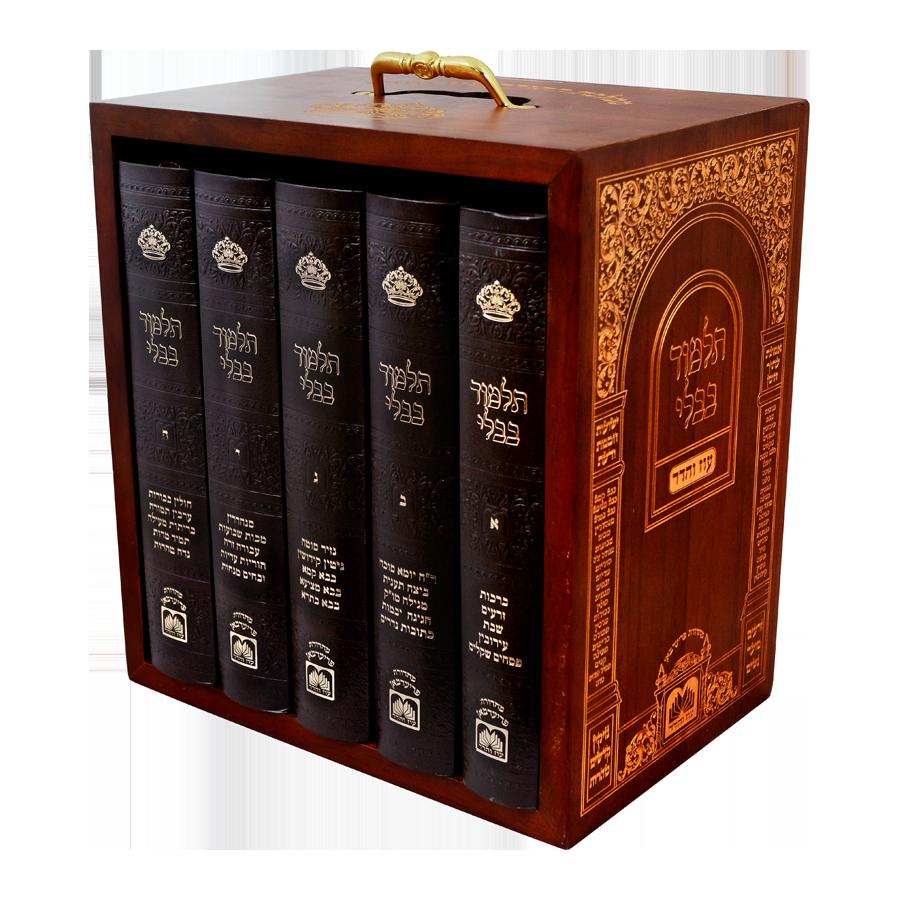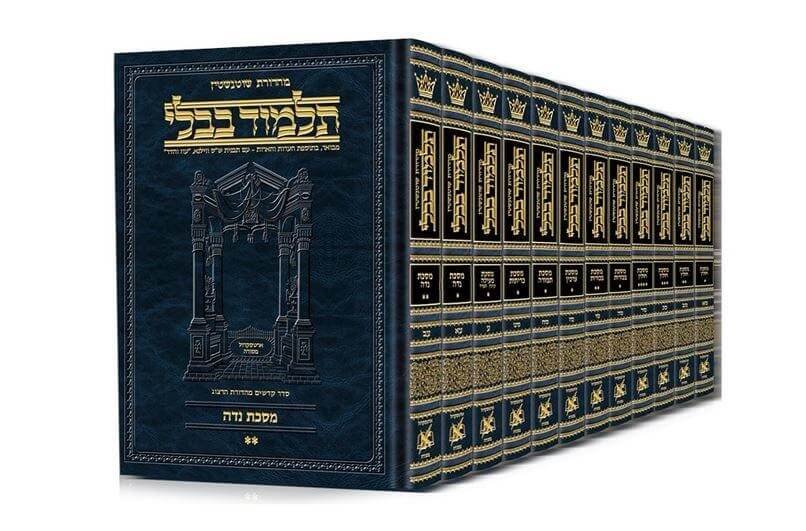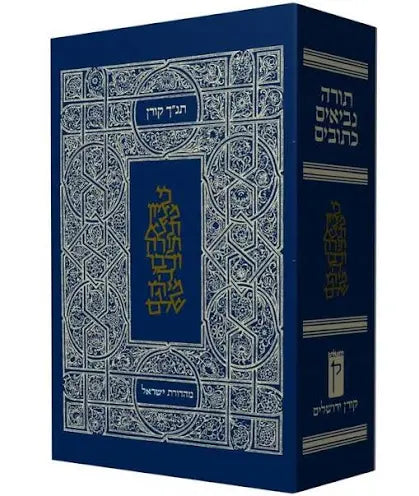-
Talmud Bavli Daf Yomi English Schottenstein 73 Vol. Set
Regular price ₪11,599.00ILSRegular priceUnit price per -
תלמוד בבלי ש"ס שוטנשטיין עברית סט גדול 73 כרכים
Regular price ₪7,599.00ILSRegular priceUnit price per -
The Noé Edition Koren Talmud Bavli - Medium 42 volumes
Regular price ₪5,300.00ILSRegular priceUnit price per -
תלמוד בבלי שטיינזלץ סט קטן 29 כרכים - Talmud Bavli set small Shtainzaltz 29 vol
Regular price ₪1,899.00ILSRegular priceUnit price per -
סט תלמוד ירושלמי עוז והדר מקוצר גדול 10 כרכים - Set Gadol Jerusalem Talmud Oz Vahadar 10 volumes
Regular price ₪1,599.00ILSRegular priceUnit price per -
סט תלמוד ירושלמי עוז והדר מקוצר פנינים 10 כרכים - Set Pninim Jerusalem Talmud Oz Vehadar 10 volumes
Regular price ₪799.00ILSRegular priceUnit price per -
תלמוד בבלי שטיינזלץ - מסכת ברכות גדול
Regular price ₪109.00ILSRegular priceUnit price per
Collections
-

Talmud Bavli Shas Oz veHadar Sets
The Oral Torah - Torah she beh-al Peh (תורה שבעל פה) mainly includes the...
-

Talmud Schottenstein Hebrew/English - תלמוד בבלי עברית-אנגלית
Talmud Bavli (Babylonian) Schottenstein Hebrew/English. Open the Schottenstein Edition and step into...
-

תנ''ך תלמוד משנה קורן סטים
ספרים של הוצאת קורן ירושלים תןפסים מקום מיוחד בים של ספרים יהודיים...
-

Koren Jerusalem - קורן ירושלים
Books by Koren Jerusalem Publishing - קורן ירושלים - will occupy a special...
-

Tanah - תנ''ך
Torah Neviim (prophets) Ktuvim (written) (Jewish Bible) - תורה נביאים וכתובים מה שנקרא...
-

Torah Artscroll
Torah Artscroll that is to say about books of exceptional quality with...

















